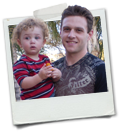Accidentally breaking your website while trying to work on it can be a very frustrating experience. Hours can be lost trying to figure out what happened and how to fix it.
The following are a few simple strategies that can help you avoid breaking your website in the first place, and make it easier to fix something when it does break.
Keep a backup
Always have a backup of your website. If your website is built using a content management system like WordPress, know how to create a backup of your WordPress website. Keep a copy of all of your website files and databases on your local drive.
Keep multiple backups
Back up your website files and database often, and keep these backups separate from one another. Sometimes websites break along the way, but we don’t realize it until months later (when someone tries to use a form that suddenly produces an error).
Having multiple backups of your website organized by the date they were made can make it easy to access files and code throughout your website’s history, which can allow you to grab a copy of the code when it was working and update the broken website.
Back up your website before anyone works on it
Some website designers are flaky; they can’t be trusted to stay around long enough to complete the job, nor can we be sure they’ll back up the website properly before they start working on it.
Before you ever let someone work on your website, create a complete back up of it for safe keeping. If they’re doing a lot of work on the site, create backups along the way is if you were working on the site yourself.
Pay close attention to where you’re uploading your files
When you’re using an FTP program, move your mouse slowly and double check what folder you’re in before you upload anything. If you think you’re in the “services” folder, but you upload over the files in the website root, your website is going to break!
Another good strategy when using FTP is to “sync” the folders between your computer and your server, so that when you navigate into a deeper folder on your computer, the server will access the same folder. This can help ensure you’re in the right place before you upload.
Upload files manually with FTP
A lot of website editors like Dreamweaver have options that allow you to automatically upload files to your website. Many times I’ve seen people upload entire copies of their website to the root folder, and then into the images folder, and then into another folder, which creates a mess of files all over the place.
If you learn to use a basic FTP program and upload your files manually (and carefully) there’s probably a better chance they’ll end up in the right place.
Never overwrite files on your computer
If someone else has worked on your website and you want to download their updates, resist the urge to just download the whole site over your local copy. If they made an error (or if you make an error in selecting which folder you’re downloading to) you can overwrite the only working copy of your site!
Whenever I need to download files from my website, I copy the existing files on my computer into a backup folder, and download everything into an empty folder. I never, ever, overwrite local files when downloading from the server. I end up with a lot of backups, but with 500 gigabytes of hard drive it’s no big deal.
Know what effect the changes you’re making will have (and why)
When you edit a page, do it the right way. For example, don’t just mess around in Dreamweaver until something seems to look right. It might appear differently in the web browser (or even between the various browsers). Ask yourself, “what am I looking to achieve?” and then “what is the right html tag or CSS style to achieve that effect?”.
Virtually anything you can want to change on your web page is possible using correct html and CSS, and there’s a free tutorial for just about everything these days. Take a moment to update your web page the right way, and there’s a much greater chance your website will continue to look and function how it’s intended to.


 Zachary Coyne is a freelance website designer and developer in Tucson, Arizona. Zach has been designing, developing, fixing and updating websites for the better part of a decade. He enjoys helping people learn how to fix and update their websites, and offers one on one
Zachary Coyne is a freelance website designer and developer in Tucson, Arizona. Zach has been designing, developing, fixing and updating websites for the better part of a decade. He enjoys helping people learn how to fix and update their websites, and offers one on one 